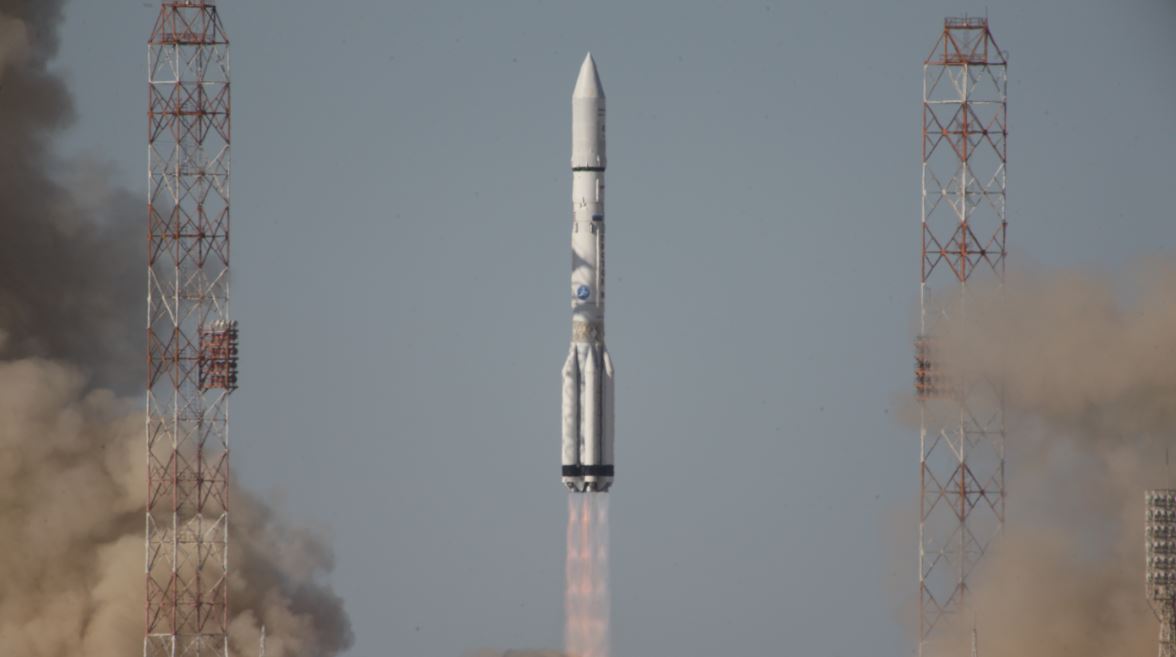
UK communications satellite operator Inmarsat saw its third Global Xpress satellite launch on Friday, putting the final piece of a global broadband network in place.
Launched from the Baikonur space centre in Kazakhstan, the $400m Boeing built satellite took off on a Khurichev and International Luanch Systems operated Proton V launch vehicle.
Once settled into its 35,000km geo stationary orbit above the equator before the end of the year and fully operational it will complete the global coverage of high bandwidth mobile communications.
Once operational the Inmarsat spacecraft will be able to beam 50Mbps broadband on a global, regional or spot beam basis on the Ka (Kaay Ay) spectrum band.
Global Xpress is expected to generate $500m in annual revenues by 2020.
As well as existing commercial use, new opportunities include cabin connectivity for airlines and IOT comms infrastructure for ‘Smart ships.’
The Boeing built $450m GX-5 F3 satellite was successfully launched atop a three stage Proton rocket and Breez booster built by Khrunichev State Research.
Over the coming weeks, the Inmarsat Operations Team will raise I-5 F3 to its final orbit, deploy its solar arrays and reflectors, and undertake payload testing. At the end of these procedures, I-5 F3 will join the first two GX satellites, which are already in orbit and operating successfully, to create the first, globally available, high-speed mobile broadband network delivered by a single operator.
Rupert Pearce, CEO of Inmarsat, said: "We have been working towards this day ever since we announced plans to create the Global Xpress constellation in 2010. I am delighted that we now have three Global Xpress satellites in orbit, enabling us to provide global GX services by the end of the year. This is a significant milestone for Inmarsat; one that will offer major growth opportunities and promises to change the face of our industry."






